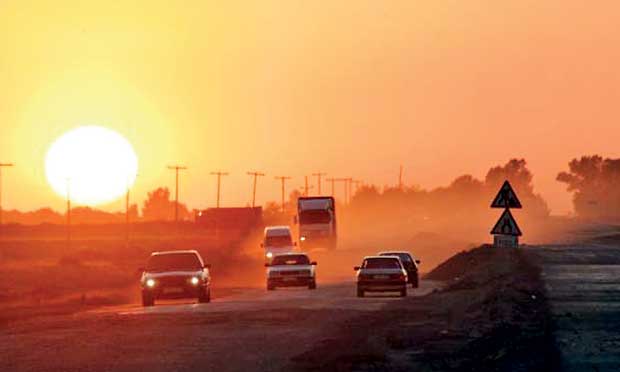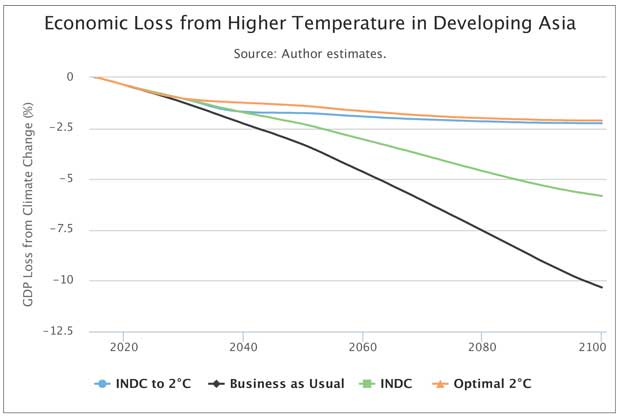13 Jul 2017 - {{hitsCtrl.values.hits}}

 We all know that if global warming continues unchecked, there will be dire consequences for the environment. But economies will also be severely affected.
We all know that if global warming continues unchecked, there will be dire consequences for the environment. But economies will also be severely affected.
Micro-econometric analyses show clear evidence that rising temperature threatens agricultural yields and diminishes worker productivity, which consequently undermine household welfare.
Studies show that when mean global temperature climbs above the estimated optimal average annual temperature of 14.2°C, economic productivity starts to decline.
A December 2016 the Asian Development Bank working paper indicates that the economic impact of global warming goes beyond the agriculture sector and can also affect industry and investments.
The chart presents estimated economic losses by 2100 from temperature rise in developing Asia based on the four scenarios of the World Induced Technical Change Hybrid (WITCH) model, an integrated assessment model designed to assess climate change mitigation and adaptation policies.
These scenarios are calculated from each country’s intended nationally determined contributions (INDCs) under the 2015 Paris Agreement to reduce greenhouse gas emissions.
In the business-as-usual scenario, global warming will reach 3.9°C (above pre-industrial levels) by 2100 and cause economic losses of more than 10 percent of gross domestic product (GDP) in developing Asia.
That loss is cut by about half under the INDC scenario, which assumes that all countries will abide by their Paris commitments to cut greenhouse gas emissions until 2030.

The other two—and more ideal—scenarios are INDC to 2°C, which accounts for a global carbon tax after 2030, and Optimal 2°C, which allows more stringent emissions reductions prior to 2030.
Both would limit economic losses from global warming in developing Asia to slightly less than 2.5 percent of GDP. These two scenarios assume successful implementation of pledges to achieve the Paris Agreement’s goal of less than 2 degrees Celsius (2°C) warming, doubling the absence of carbon dioxide and higher mitigation initiatives.
Losses from the INDC scenario are halfway between business as usual and the ideal scenarios, which entail doing much more at the national level to curb global temperature rise. The high economic costs of global warming are a clear sign that countries in developing Asia have much to gain from enacting ambitious climate policies – and much to lose from failing to act.
(Minsoo Lee is a Senior Economist, Economic Research and Regional Cooperation Department, the Asian Development Bank)
07 Jan 2025 7 hours ago
07 Jan 2025 7 hours ago
07 Jan 2025 8 hours ago
07 Jan 2025 07 Jan 2025
07 Jan 2025 07 Jan 2025